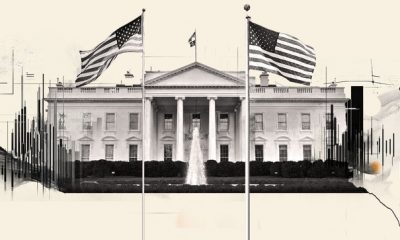

others
Gold builds on strong intraday gains; bulls retain control near $3,050 area amid risk-off mood – Crypto News
- Gold price catches fresh bids on rising global trade tensions and recession fears.
- Bets for multiple Fed rate cuts weigh on the USD and support the precious metal.
- Rising US bond yields could act as a headwind ahead of FOMC meeting minutes.
Gold price (XAU/USD) climbs back closer to the $3,050 area during the early European session on Thursday as worries that an all-out global trade war would push the world economy into recession continue to boost safe-haven demand. Furthermore, bets that a tariffs-driven US economic slowdown might force the Federal Reserve (Fed) to resume its rate-cutting cycle turn out to be another factor that contributes to driving flows towards the non-yielding yellow metal.
Meanwhile, the US Dollar (USD) selling remains unabated for the second straight day amid the prospects for multiple rate cuts by the Fed in 2025 and further benefits the Gold price. The strong intraday move up could further be attributed to some technical buying beyond the $3,022-3,023 hurdle. This, along with the fundamental backdrop, suggests that the path of least resistance for the XAU/USD pair is to the upside as traders look to FOMC minutes for a fresh impetus.
Daily Digest Market Movers: Gold price continues to attract safe-haven flows amid US tariffs impact worries
- The White House press secretary Karoline Leavitt confirmed that the US will proceed with a sweeping 104% tariff on Chinese imports starting this Wednesday. This continues to fuel worries that an all-out trade war would push the global economy into recession, which triggers a fresh wave of the risk-aversion trade and revives demand for the safe-haven Gold price.
- Investors ramped up their bets that a tariffs-driven US economic slowdown could force the Federal Reserve (Fed) to resume its rate-cutting cycle soon. In fact, the CME Group’s FedWatch Tool suggests that traders are pricing in over a 60% chance that the Fed will lower borrowing costs in May. Moreover, the US central bank is expected to deliver five rate cuts in 2025.
- This, in turn, drags the US Dollar lower for the second straight day despite the overnight hawkish comments from Fed officials. In fact, San Francisco Fed President Mary Daly said on Tuesday that the policy is in a very good place and modestly restrictive. Daly further noted that inflation pressure from widespread tariffs is an increasing concern.
- Separately, Chicago Fed President Austan Goolsbee said that US tariffs are way bigger than anticipated and pose a real risk to US importers who have very few fallback options. The relationship of sentiment to spending isn’t as strong as before and It’s not obvious how the Fed would react to negative supply shock, Goolsbee added further.
- Investors now look forward to the release of minutes from the Fed’s last policy meeting. Apart from this, the US Consumer Price Index (CPI) and the Producer Price Index (PPI) on Thursday and Friday, respectively, will be scrutinized for cues about the Fed’s policy path. This, in turn, will drive the USD in the near term and influence the XAU/USD pair.
Gold price could extend the positive momentum; intraday break above the $3,022-3,023 hurdle in play
From a technical perspective, the recent sharp decline from the record high stalled near the 61.8% Fibonacci retracement level of the February-April move-up. The said support is pegged near the $2,957-2,956 area, or a multi-week low touched on Monday and is closely followed by the 50-day SMA, currently around the $2,952 region. A convincing break below the latter will be seen as a fresh trigger for bearish traders and drag the Gold price to the next relevant support near the $2,920 horizontal zone en route to the $2,900 round figure.
On the flip side, momentum beyond the overnight swing high, around the $3,023 area, could push the Gold price to the $3,055-3,056 barrier. Some follow-through buying should pave the way for a move towards reclaiming the $3,100 mark, with some intermediate hurdle near the $3,075-3.080 region.
Risk sentiment FAQs
In the world of financial jargon the two widely used terms “risk-on” and “risk off” refer to the level of risk that investors are willing to stomach during the period referenced. In a “risk-on” market, investors are optimistic about the future and more willing to buy risky assets. In a “risk-off” market investors start to ‘play it safe’ because they are worried about the future, and therefore buy less risky assets that are more certain of bringing a return, even if it is relatively modest.
Typically, during periods of “risk-on”, stock markets will rise, most commodities – except Gold – will also gain in value, since they benefit from a positive growth outlook. The currencies of nations that are heavy commodity exporters strengthen because of increased demand, and Cryptocurrencies rise. In a “risk-off” market, Bonds go up – especially major government Bonds – Gold shines, and safe-haven currencies such as the Japanese Yen, Swiss Franc and US Dollar all benefit.
The Australian Dollar (AUD), the Canadian Dollar (CAD), the New Zealand Dollar (NZD) and minor FX like the Ruble (RUB) and the South African Rand (ZAR), all tend to rise in markets that are “risk-on”. This is because the economies of these currencies are heavily reliant on commodity exports for growth, and commodities tend to rise in price during risk-on periods. This is because investors foresee greater demand for raw materials in the future due to heightened economic activity.
The major currencies that tend to rise during periods of “risk-off” are the US Dollar (USD), the Japanese Yen (JPY) and the Swiss Franc (CHF). The US Dollar, because it is the world’s reserve currency, and because in times of crisis investors buy US government debt, which is seen as safe because the largest economy in the world is unlikely to default. The Yen, from increased demand for Japanese government bonds, because a high proportion are held by domestic investors who are unlikely to dump them – even in a crisis. The Swiss Franc, because strict Swiss banking laws offer investors enhanced capital protection.
-
Cryptocurrency1 week ago
XRP News: Ripple Unveils ‘Ripple Prime’ After Closing $1.25B Hidden Road Deal – Crypto News
-

 Blockchain1 week ago
Blockchain1 week agoAfrica Countries Pass Crypto Laws to Attract Industry – Crypto News
-

 De-fi1 week ago
De-fi1 week agoAster Rallies on ‘Rocket Launch’ Incentives Campaign – Crypto News
-

 Cryptocurrency1 week ago
Cryptocurrency1 week agoTrump plans to pick Michael Selig to lead CFTC: Report – Crypto News
-

 Blockchain1 week ago
Blockchain1 week agoISM Data Hints Bitcoin Cycle Could Last Longer Than Usual – Crypto News
-

 Blockchain1 week ago
Blockchain1 week agoEthereum Rebounds From Bull Market Support: Can It Conquer The ‘Golden Pocket’ Next? – Crypto News
-
others1 week ago
JPY soft and underperforming G10 in quiet trade – Scotiabank – Crypto News
-

 De-fi7 days ago
De-fi7 days agoNearly Half of US Retail Crypto Holders Haven’t Earned Yield: MoreMarkets – Crypto News
-

 Cryptocurrency1 week ago
Cryptocurrency1 week agoDOGE to $0.33 in Sight? Dogecoin Must Defend This Key Level First – Crypto News
-
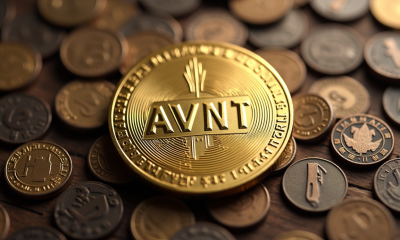
 Cryptocurrency1 week ago
Cryptocurrency1 week agoWhat next for Avantis price after the 73% recovery? – Crypto News
-

 Technology1 week ago
Technology1 week agoNothing OS 4.0 Beta introduces pre-installed apps to Phone (3a) series: Co-founder Akis Evangelidis explains the update – Crypto News
-
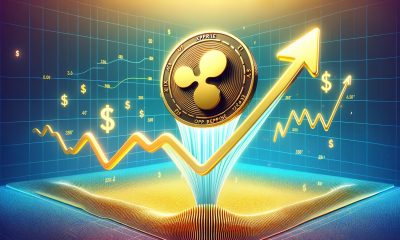
 Blockchain6 days ago
Blockchain6 days agoXRP Price Gains Traction — Buyers Pile In Ahead Of Key Technical Breakout – Crypto News
-

 Technology4 days ago
Technology4 days agoSam Altman says OpenAI is developing a ‘legitimate AI researcher’ by 2028 that can discover new science on its own – Crypto News
-

 Technology1 week ago
Technology1 week agoUniswap Foundation (UNI) awards Brevis $9M grant to accelerate V4 adoption – Crypto News
-

 Technology1 week ago
Technology1 week agoFrom Studio smoke to golden hour: How to create stunning AI portraits with Google Gemini – 16 viral prompts – Crypto News
-
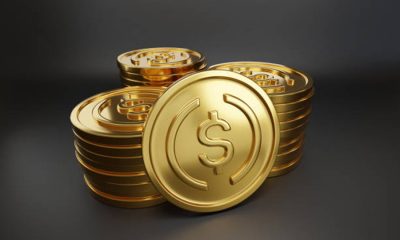
 Blockchain1 week ago
Blockchain1 week agoBinance Stablecoin Outflow On A Steady Rise — What This Means For The Market – Crypto News
-

 De-fi1 week ago
De-fi1 week agoHYPE Jumps 10% as Robinhood Announces Spot Listing – Crypto News
-
others7 days ago
Platinum price recovers from setback – Commerzbank – Crypto News
-

 Cryptocurrency6 days ago
Cryptocurrency6 days agoWestern Union eyes stablecoin rails in pursuit of a ‘super app’ vision – Crypto News
-

 Cryptocurrency1 week ago
Cryptocurrency1 week agoCrypto update: Bitcoin and Ethereum are stable as market’s focus shifts to US inflation data – Crypto News
-

 De-fi1 week ago
De-fi1 week agoSolana DEX Meteora Launches Native MET Token – Crypto News
-

 Technology1 week ago
Technology1 week agoGoogle and Apple face extra UK scrutiny over strategic role in mobile platforms – Crypto News
-
Business1 week ago
White House Crypto Czar Backs Michael Selig as ‘Excellent Choice’ To Lead CFTC – Crypto News
-
Business1 week ago
Breaking: Trump To Meet China’s President On October 30, Bitcoin Bounces – Crypto News
-
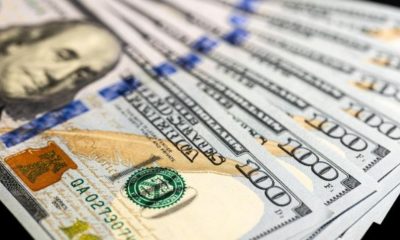
 Cryptocurrency7 days ago
Cryptocurrency7 days agoUSDJPY Forecast: The Dollar’s Winning Streak Why New Highs Could Be At Hand – Crypto News
-

 Cryptocurrency1 week ago
Cryptocurrency1 week agoLedger Nano Gen5 feels like Flex for less – Crypto News
-

 Cryptocurrency1 week ago
Cryptocurrency1 week agoFetch.ai and Ocean Protocol move toward resolving $120M FET dispute – Crypto News
-

 Technology1 week ago
Technology1 week agoOpenAI announces major Sora update: Editing, trending cameos, and Android launch on the way – Crypto News
-

 Metaverse1 week ago
Metaverse1 week agoGemini in Gmail automates meeting schedules effortlessly – Crypto News
-

 Technology1 week ago
Technology1 week agoMint Explainer | India’s draft AI rules and how they could affect creators, social media platforms – Crypto News
-

 Blockchain1 week ago
Blockchain1 week agoEntire Startup Lifecycle to Move Onchain – Crypto News
-

 Cryptocurrency1 week ago
Cryptocurrency1 week agoNEAR’s inflation reduction vote fails pass threshold, but it may still be implemented – Crypto News
-

 Blockchain7 days ago
Blockchain7 days agoXRP/BTC Retests 6-Year Breakout Trendline, Analyst Calls For Decoupling – Crypto News
-
others7 days ago
Indian Court Declares XRP as Property in WazirX Hack Case – Crypto News
-

 Technology7 days ago
Technology7 days agoSurvival instinct? New study says some leading AI models won’t let themselves be shut down – Crypto News
-
others6 days ago
Is Changpeng “CZ” Zhao Returning To Binance? Probably Not – Crypto News
-

 Technology1 week ago
Technology1 week agoSolana’s RWA market surpasses $700M all-time high as adoption accelerates – Crypto News
-

 Cryptocurrency1 week ago
Cryptocurrency1 week agoJito’s JTO token rises on a16z’s $50 million investment in Solana staking protocol – Crypto News
-
Technology1 week ago
Dogecoin Price Crash Looms as Flag, Death Cross, Falling DOGE ETF Inflows Coincide – Crypto News
-

 Blockchain1 week ago
Blockchain1 week agoBitcoin Whale From 2009 Moves Coins After 14 Years Asleep – Crypto News
-
Technology1 week ago
Can Hype Price Hit $50 After Robinhood Listing? – Crypto News
-
Business1 week ago
HBAR Price Targets 50% Jump as Hedera Unleashes Massive Staking Move – Crypto News
-
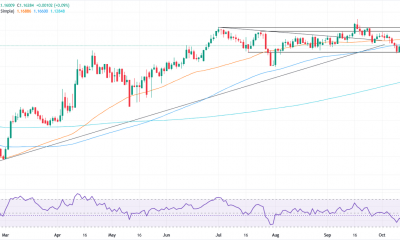
 others1 week ago
others1 week agoEUR/USD hovers at 1.1600 as muted CPI data fails to alter Fed stance – Crypto News
-

 Cryptocurrency1 week ago
Cryptocurrency1 week agoBitcoin’s institutional surge widens trillion-dollar gap with altcoins – Crypto News
-
Business1 week ago
PEPE Coin Price Prediction as Weekly Outflows Hit $17M – Is Rebound Ahead? – Crypto News
-

 Cryptocurrency1 week ago
Cryptocurrency1 week agoHYPE Breaks Out After Robinhood Listing and S-1 Filing: What’s Next? – Crypto News
-
Technology1 week ago
Analyst Eyes Key Support Retest Before a Rebound for Ethereum Price Amid $93M ETF Outflows and BlackRock Dump – Crypto News
-
Business1 week ago
Ripple Explores New XRP Use Cases as Brad Garlinghouse Reaffirms Token’s ‘Central’ Role – Crypto News
-
others1 week ago
Bitcoin Price Eyes $120K Ahead of FED’s 98.3% Likelihood to Cut Rates – Crypto News
-
others1 week ago
Tether’s Stablecoin 1.0 Era Is Over – Now the Industry Needs 2.0 – Crypto News

